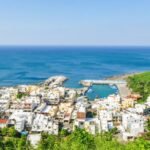Introduction to the Cook Islands
The Cook Islands are a stunning archipelago located in the South Pacific, nestled between French Polynesia and Fiji. Comprising 15 islands, this nation is a self-governing territory in free association with New Zealand. The capital, Avarua, is situated on Rarotonga, the largest island.
With a tropical rainforest climate, the Cook Islands enjoy an average temperature of 24°C and annual rainfall of about 2000 mm. The population is approximately 20,200, with all residents holding New Zealand passports. The majority of the population (92%) are of Māori descent, while 3% are of European ancestry.
Religious beliefs are prominent, with 69% of the residents adhering to Protestant Christianity and 15% to Roman Catholicism. The official languages are Cook Islands Māori and English, allowing for rich cultural interactions and experiences for both locals and visitors alike.


The Cook Islands boast pristine white sandy beaches, swaying coconut palms, and crystal-clear waters that rival those of Tahiti. The sea exhibits a stunning blue hue with hints of green, giving it an almost ethereal quality. The locals are warm and welcoming, known for their hospitality and intelligence.
Safety is a hallmark of life here; doors are left unlocked at night, and theft is virtually nonexistent. Violent incidents are unheard of—so much so that the police don’t carry guns, as they never need to.


Rarotonga is the largest of the 15 Cook Islands, with the capital, Avarua, located just to the north. About 70% of the island remains covered in lush, untouched jungle. There’s an intriguing local law that mandates all buildings must not exceed the height of coconut trees.
As a result, the landscape is dominated by the graceful silhouettes of palm trees against a backdrop of blue skies and white clouds, creating a stunning coastline. If you’re looking to explore the island, there’s a well-maintained circular road stretching over 30 kilometers, where you can rent a car, motorcycle, or bicycle to take in the sights.


The easiest way to explore the island is to hop on the yellow vintage circular bus. You can sit back, enjoy the refreshing sea breeze, and every snapshot you take along the way could easily serve as a desktop background. The bus operates on two routes—clockwise and counterclockwise—running every twenty minutes. It stops at all the must-see attractions around the island, and the fare is just 8 NZD.

Muri Beach is the most famous beach in Rarotonga, stretching for 2 kilometers of pristine white sand. It’s ranked as the seventh-best beach in the world. Under the brilliant sunshine, if you look at it from a distance, this long stretch of beach appears as a silver lace trim embedded in the deep blue waters of the South Pacific.

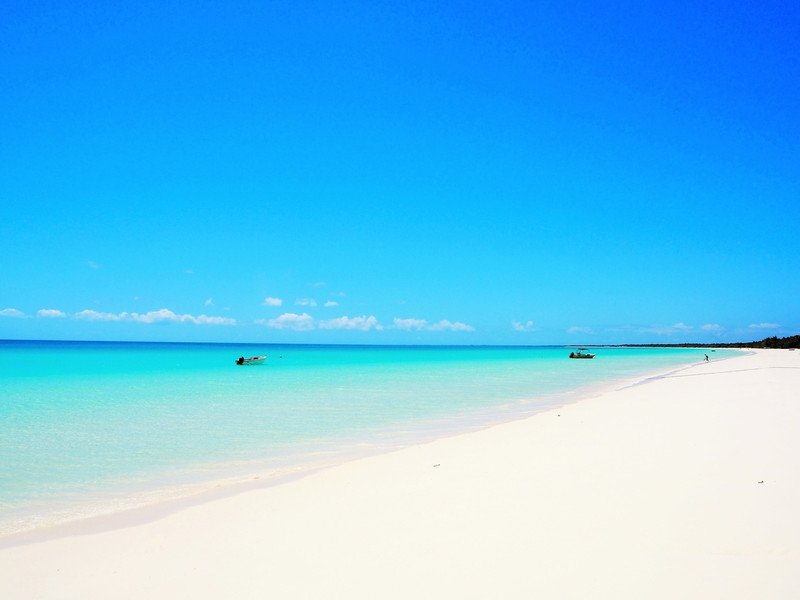
In this gem-like beautiful lagoon, four dreamlike islets—Ta’akoka, Kooromiri, Oneora, and Tapu—float into view. The area is packed with restaurants, bars, and centers for water activities like swimming, snorkeling, and kayaking. As evening falls, the setting sun casts a glow that turns the sea half orange and half blue-green, splitting into five or six shades of blue. It’s as if the creator had a soft spot for the Cook Islands, giving them all the blues imaginable.



Punanga Nui Market is bursting with Polynesian flair, offering a wide array of eclectic goods. You’ll find stalls overflowing with fresh fruits, traditional food vendors wafting delicious aromas, shacks displaying giant tuna, and even a mobile coffee shop converted from a car. It’s a vibrant hub where local culture and culinary delights come together.


In addition, you’ll find black pearls worth thousands of dollars, exquisite pieces of traditional Polynesian art, and fascinating ancient artifacts. If you’re a foodie, don’t miss the chance to sample the unique culinary delights of the Cook Islands. The night market offers an array of grilled treats and desserts, and you can even try the famous national dish—coconut cream fish salad.

Highland Paradise Cultural Center
When you visit Rarotonga, don’t miss the opportunity to explore the local cultural village. It’s a great way to experience the customs and traditions of the Cook Islands.
The village is located on a hill in the Māori community of Rarotonga, where locals showcase unique historical artifacts like sacrifice stones and navigation stones, along with reconstructed ancient buildings. You can enjoy nighttime performances featuring drumming and dancing, and participate in an umu barbecue (underground oven) to savor delicious food.


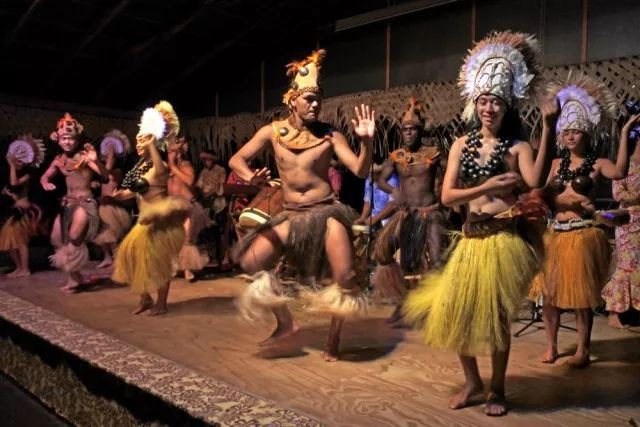
Tips: Highland Paradise is only open to the public on Tuesdays, Thursdays, and Saturdays. If you miss it, you can visit another cultural village—Vaimaanga Cultural Village, which is open on Mondays, Wednesdays, and Fridays, allowing you to experience both without overlap.
Aitutaki is a must-visit when exploring the Cook Islands; its waters boast some of the purest Tiffany blue in the world. A short 45-minute flight north from Rarotonga takes you to this enchanting island, often referred to as the “home of fairies and spirits,” surrounded by pristine white sandy beaches and stunning lagoons.


CNN once named it “the second most beautiful view in the world,” and it was selected by Tony Wheeler, the founder of Lonely Planet, as one of the most beautiful islands globally. At the highest point of Aitutaki, Maunga Pu, visitors are treated to breathtaking 360-degree views of this paradise. Here, you can count an incredible array of blues—azure, cerulean, turquoise, peacock blue, and, of course, the beloved Tiffany blue.



At night, Aitutaki falls into a tranquil silence, with a sky full of stars. There’s very little light pollution in the Cook Islands, and after dark, the roads are unlit. The sky becomes an intense black, allowing all the stars to shine brightly and reveal themselves.

The lagoon here is truly one of a kind. From above, the island is surrounded by crystal-clear blue waters, with no waves, allowing you to hear the gentle sound of your feet sinking into the sand. Islands float like a pearl necklace in the turquoise lagoon, where the calm sea resembles a tranquil lake, clear and pristine. The soft sandy beaches are perfect for strolling. The entire lagoon looks like a still painting, and even without any filters, you can capture stunning photos with your phone.


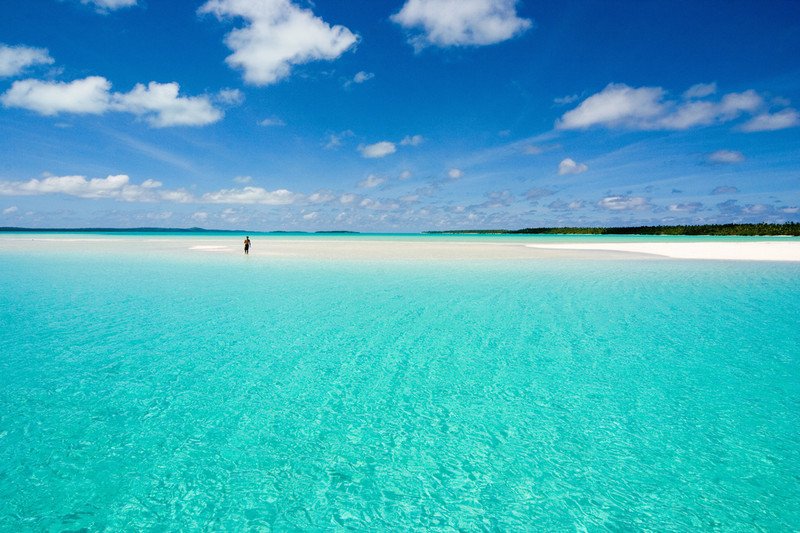
Tips
★ You can join a local lagoon day tour, which usually includes island hopping in the morning and underwater activities in the afternoon. Price: $95 per person.
★ Many newlyweds choose this place for their honeymoon, so there are lots of packages designed for couples, like the romantic sunset cruise, priced at $300 per couple.
One Foot Island
One Foot Island is celebrated as the most beautiful island in Aitutaki, and it was recognized by the World Travel Award as having the best beach in Asia and the Pacific. Here, you’ll find silky smooth white sands and stunning turquoise waters, making it a perfect spot for swimming and sailing. There’s even the world’s tiniest post office, where you can send postcards and stamp your passport with a unique souvenir—the footprint stamp!


Aitutaki is renowned for its blue coral reefs and is a snorkeling paradise. When the sun’s shining, you can dive into the crystal-clear, shallow blue waters and swim while spotting schools of small fish darting among the coral. Occasionally, you’ll even see larger fish up to a meter long. Further down, massive oysters hold the world’s rare black pearls, just waiting for your adventure.


You can also hop on a small boat to watch the tropical fish underwater or have a barbecue under the coconut palms on the beach, sipping fresh coconut water straight from the tree—now that’s what you call “all-natural.” The cost of living in the Cook Islands isn’t steep, especially when it comes to food. For around 30 NZD, you can get a hearty main dish, and don’t miss out on trying the local beer called MATUTU.
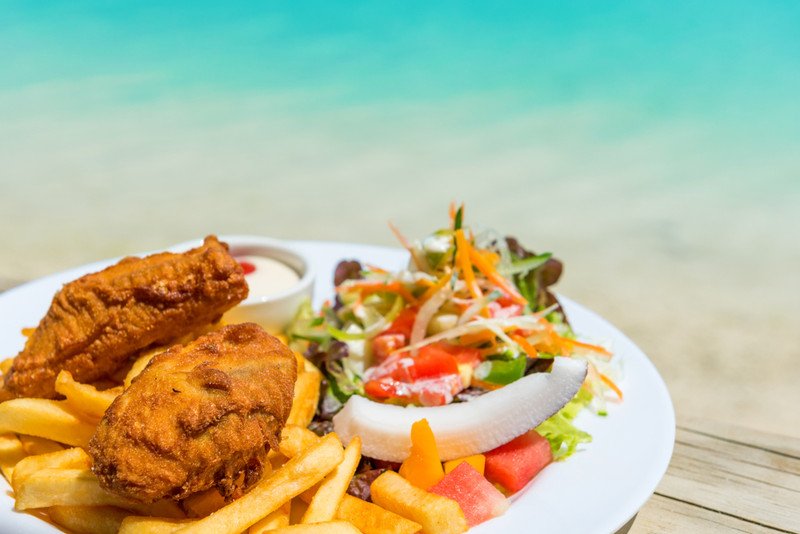
Abundant Seafood
Many travelers come to the Cook Islands not just for the stunning coastal scenery but also for the food. There’s a local policy that allows visitors to collect seafood during designated times—and the best part? It’s all free! Just for this complimentary seafood feast, it’s worth flying out here. When you arrive, you’ll be amazed by the sheer quantity of seafood available; it’s a staple for the locals.
Interestingly, locals rarely eat things like large lobster shells. So, some wealthy visitors even bring along chefs who specialize in seafood to enjoy a lavish feast against the backdrop of breathtaking ocean views.




